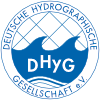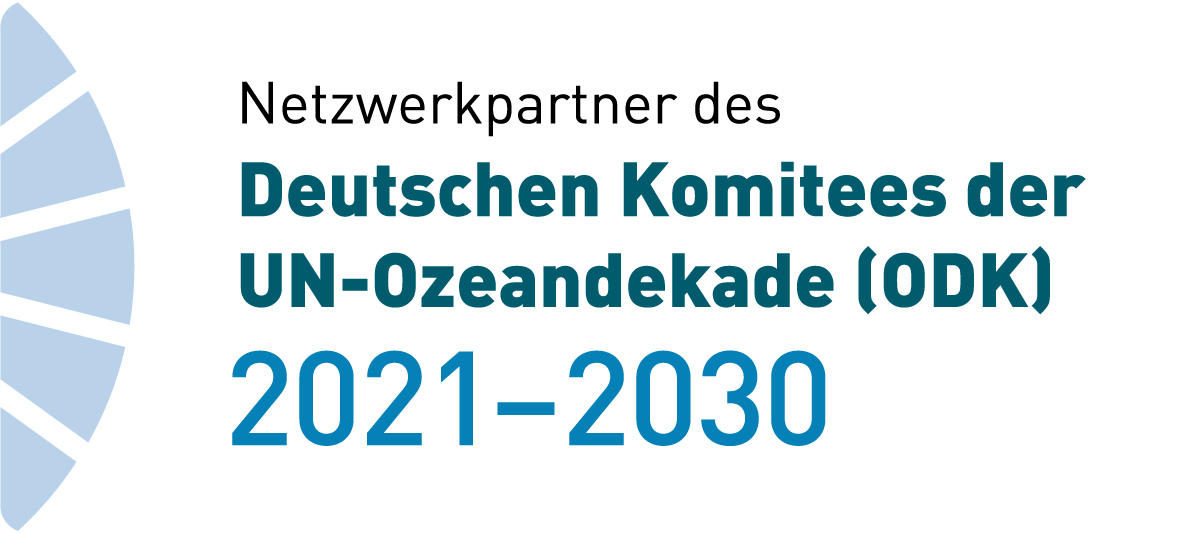HN Ausgaben wählen
- HN 132 (9)
- HN 131 (17)
- HN 130 (10)
- HN 129 (8)
- HN 128 (10)
- HN 127 (6)
- HN 126 (10)
- HN 125 (11)
- HN 124 (8)
- HN 123 (10)
- HN 122 (9)
- HN 121 (10)
- HN 120 (7)
- HN 119 (10)
- HN 118 (7)
- HN 117 (10)
- HN 116 (14)
- HN 115 (10)
- HN 114 (6)
- HN 113 (10)
- HN 112 (7)
- HN 111 (9)
- HN 110 (9)
- HN 109 (11)
- HN 108 (8)
- HN 107 (9)
- HN 106 (7)
- HN 105 (14)
- HN 104 (6)
- HN 103 (11)
- HN 102 (8)
- HN 101 (9)
- HN 100 (13)
- HN 097 (1)
Seevermessung mal anders
Zehn Tage Schweremessungen mit dem VWFS Deneb auf der Nordsee im Juni und Juli 2021
Wer Höhen mit globalen Navigationssatellitensystemen bestimmen will, benötigt eine Höhenbezugsfläche. In Deutschland ist die Höhenbezugsfläche das German Combined Quasigeoid (GCG). Diese wurde nun für die Nordsee neu bestimmt. Dazu wurden Schweremessungen durchgeführt. Wie die Messungen abliefen und was es dabei zu beachten gab, erklären die beteiligen Wissenschaftler.
Schwerefeld | German Combined Quasigeoid | Seekartennull | Satellitenaltimetrie | BSCD2000
Anyone who wants to determine heights with global navigation satellite systems needs a height reference surface. In Germany, the height reference surface is the German Combined Quasigeoid (GCG). This has now been newly determined for the North Sea. Gravity measurements were carried out for this purpose. The scientists involved explain how the measurements were carried out and what had to be taken into account.
gravity field | German Combined Quasigeoid | chart datum | satellite altimetry | BSCD2000
- Ausgabe: HN 120, Seite 38–45
- DOI: 10.23784/HN120-05
- Autor/en: Gunter Liebsch, Patrick Westfeld, Christoph Förste, Ludwig Schröder, Joachim Schwabe, Tobias Peter Bauer, Nico Stolarczuk
»Habitatkartierung wird niemals beendet sein«
Dr. Svenja Papenmeier ist seit 2019 Wissenschaftliche Mitarbeiterin in der Arbeitsgruppe Marine Geophysik am Leibniz-Institut für Ostseeforschung Warnemünde (IOW). Dort entwickelt sie standardisierte Verfahren für die Sedimentkartierung, vor allem mit hy¬droakustischen Methoden. Im Interview erläutert sie den Unterschied zwischen Habitatkartierung und Biotopkartierung. Und sie erklärt, warum die Untersuchungsgebiete manchmal Tausende Quadratkilometer groß sind, bei manchen Fragestellungen aber auch schon der Blick auf einen einzigen Quadratmeter genügt.
Habitatkartierung | Sedimentkartierung | Biotopkartierung | Flora-Fauna-Habitat-Richtlinie | Ostsee
Dr. Svenja Papenmeier has been a research associate in the Marine Geophysics working group at the Leibniz Institute for Baltic Sea Research Warnemünde (IOW) since 2019. There she develops standardised procedures for sediment mapping, primarily using hydroacoustic methods. In the interview, she explains the difference between habitat mapping and biotope mapping. And she explains why the study areas are sometimes thousands of square kilometres in size, but for some questions a glance at a single square metre is enough.
habitat mapping | sediment mapping | biotope mapping | Flora-Fauna-Habitat Directive | Baltic Sea
- Ausgabe: HN 120, Seite 32–37
- DOI: 10.23784/HN120-04
- Autor/en: Svenja Papenmeier, Lars Schiller, Jens Schneider von Deimling, Patrick Westfeld
Sedimentkartierung in der niedersächsischen Nordsee und im Wattenmeer
Das wachsende Interesse an der Überwachung der Meeresumwelt hat Regierungsbehörden und Forschungsinstitute dazu ermutigt, Programme zur Kartierung des Meeresbodens durchzuführen, und so auch das wissenschaftliche Interesse an innovativen Kartierungsmethoden und -instrumenten geweckt. Die Forschungsstelle Küste im Niedersächsischen Landesbetrieb für Wasserwirtschaft, Küsten- und Naturschutz (NLWKN) führt auf Grundlage der Europäischen Richtlinien 1992/43/EG (FFH-Richtlinie), 2000/60/EG (EG-WRRL) und 2008/56/EG (EG-MSRL) die Kartierung der sublitoralen Flächen der niedersächsischen Übergangs-, Küsten- und Meeresgewässer durch. Bei der als Daueraufgabe angelegten Arbeit wird die morphologische und sedimentologische Beschaffenheit der Meeresbodenoberfläche sowie des unmittelbar angrenzenden Meeresuntergrundes erfasst. Die Kartierung erfolgt basierend auf aufwendiger Messtechnik und objektiven Auswertungsmethoden, welche die Ermittlung eindeutiger und über das gesamte Erfassungsgebiet einheitlich reproduzierbarer Ergebnisse erlaubt.
Sedimentkartierung | Fächerecholot | Sedimentecholot | objektive Auswertungsmethoden | niedersächsische Nordsee und Wattenmeer
The growing interest on seabed monitoring strongly encouraged governmental agencies and research institutes to undertake mapping programs and stimulated the scientific interest in innovative mapping methods and tools. The Forschungsstelle Küste within the Lower Saxony Water Management, Coastal Defence and Nature Conservation Agency (NLWKN) is in charge of mapping the subtidal areas of Lower Saxony Coastal and Marine Waters, in order to implement the 1992/43/EEC (EC-HD), 2000/60/EC (EC-WFD) and 2008/56/EG (EC-MSFD) European Directives. Within the program, the Forschungsstelle Küste maps the morphological and sedimentological features of the seabed, as well as the stratigraphical structures of the immediate subbottom. The mapping workflow consists of objective interpretation approaches, which allows the univocal and repeatable results over the whole survey area.
sediment mapping | multibeam echo sounder | sub-bottom profiler | objective methods | Lower Saxony North Sea and Wadden Sea
- Ausgabe: HN 120, Seite 24–31
- DOI: 10.23784/HN120-03
- Autor/en: Francesco Mascioli, Tina Kunde
ECOMAP
Habitatkartierung mittels innovativer optischer und akustischer Fernerkundungs- und Auswerteverfahren
Wie hilfreich sind neue Verfahren der optischen und akustischen Fernerkundung in der Ostsee in Bezug auf Habitatkartierung im Flachwasser? Wie sensitiv reagieren die Sensoren auf spezifische Flora und Fauna? Kann künstliche Intelligenz die Datenauswertung und Datenklassifikation entscheidend voranbringen? Und welche natürlichen Schwankungen lassen sich in den Habitaten beobachten? Diese und verwandte Fragen stellte sich ein Forschungs- und Entwicklungsverbund unter Beteiligung von Deutschland, Dänemark und Polen. Ein Teil der Fragen wurde innerhalb der dreijährigen Projektlaufzeit beantwortet, einige wichtige Ergebnisse möchten wir hier darstellen.
Habitatkartierung | multispektrale Akustik | maschinelles Lernen | Fächerecholot | optische Fernerkundung | Ostsee
How useful are new methods of optical and acoustic remote sensing in the Baltic Sea with regard to habitat mapping in shallow water? How sensitive are the sensors to specific flora and fauna? Can artificial intelligence decisively advance data evaluation and data classification? And what natural fluctuations can be observed in the habitats? These and related questions were asked by a research and development network with the participation of Germany, Denmark and Poland. Some of the questions were answered during the three-year project period; we would like to present some important results here.
habitat mapping | multispectral acoustics | machine learning | multibeam echo sounder | optical remote sensing | Baltic Sea
- Ausgabe: HN 120, Seite 13–22
- DOI: 10.23784/HN120-02
- Autor/en: Jens Schneider von Deimling, Peter Feldens
Nutzung von Fernerkundungsdaten für ein Monitoring von Flachwasser- und Strandbereichen von Küsten
Sachstand und Ausblick
Wir stellen ein satellitenbasiertes Monitoring von Küstenhabitaten vor, welche den Strandbereich (angelandetes Makrophyten-Treibsel) wie die benthischen Lebensräume im Flachwasserbereich (vor allem Seegras und gemischte Seegras-Algen-Habitate) umfasst. Um die unterschiedlichen räumlichen Ausprägungen der Habitate optimal erfassen zu können, kombinieren wir eine auf Sentinel-2-Daten basierende Flachwasserkartierung mit einer räumlichen Auflösung von 10 m mit einem Klassifikationsansatz für angelandetes Makrophyten-Treibsel mit Hilfe von PlanetScope-Daten (räumliche Auflösung < 4 m). Im Vergleich zu konventionell kartierten Flächen weisen beide Ansätze hohe räumliche Genauigkeiten auf, was eine wichtige Grundlage für ein belastbares Monitoring darstellt. Am Beispiel eines Untersuchungsgebietes an der schleswig-holsteinischen Ostseeküste zeigen wir die Vorgehensweise und die Möglichkeiten, die zurzeit verfügbare Sensoren erlauben. Basierend auf diesem Sachstand, werden künftige Entwicklungen angesprochen, welche die Erfassung von weiteren benthischen Habitaten (z. B. Muschelbänke) sowie die Kombination mit hydroakustischen Daten zur Erfassung von benthischen Habitaten in größeren Wassertiefen ermöglichen werden.
Satellitendaten | Flachwasserhabitate | Seegrundkartierung | Seegraswiesen | Makrophyten-Treibsel | Sandstrand
We present a satellite-based monitoring of coastal habitats, which includes the beach area (landed macrophyte drift) as well as the benthic habitats in the shallow water area (mainly seagrass and mixed seagrass-algae habitats). In order to optimally capture the different spatial characteristics of the habitats, we combine shallow water mapping based on Sentinel-2 data with a spatial resolution of 10 m with a classification approach for landed macrophyte driftwood using PlanetScope data (spatial resolution < 4 m). Compared to conventionally mapped areas, both approaches show high spatial accuracies, which is an important basis for robust monitoring. Using the example of a study area on the Baltic Sea coast of Schleswig-Holstein, we show the approach and the possibilities that currently available sensors allow. Based on this state of affairs, future developments will be addressed, which will allow the detection of further benthic habitats (e.g. mussel beds) as well as the combination with hydroacoustic data for the detection of benthic habitats in greater water depths.
satellite data | shallow water habitats | seabed mapping | seagrass beds | macrophyte driftwood | sand beach
- Ausgabe: HN 120, Seite 6–12
- DOI: 10.23784/HN120-01
- Autor/en: Natascha Oppelt, Florian Uhl, Katja Kuhwald, Victor Lion


